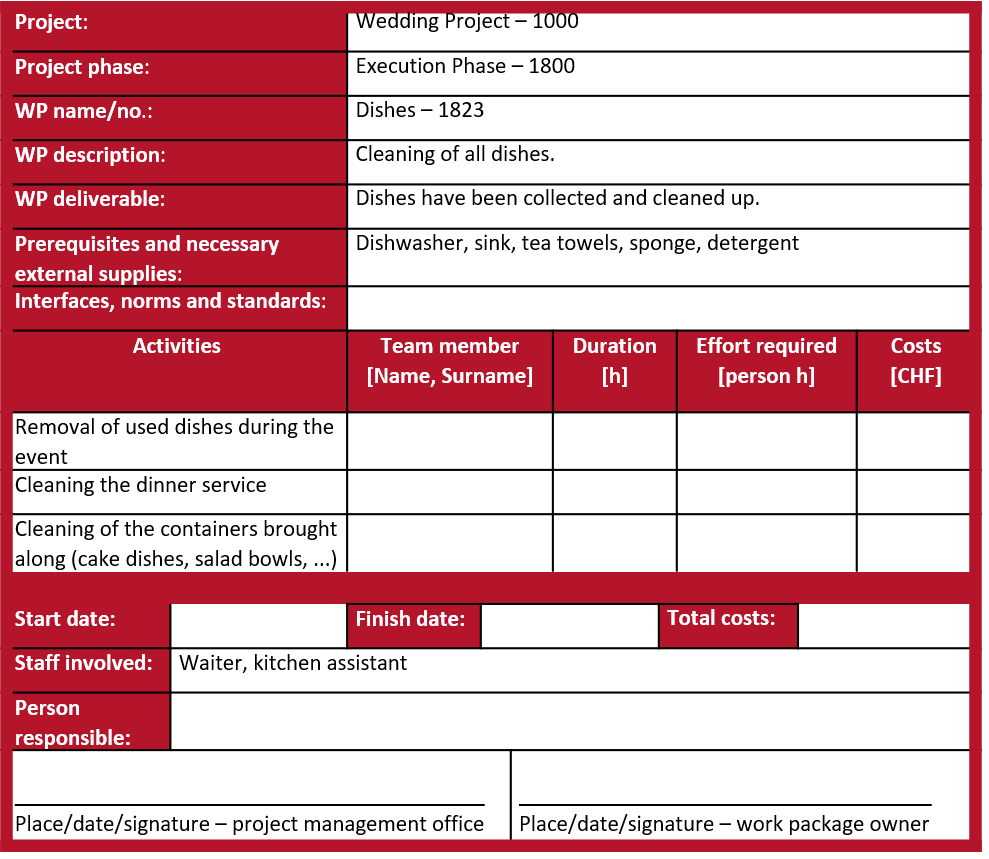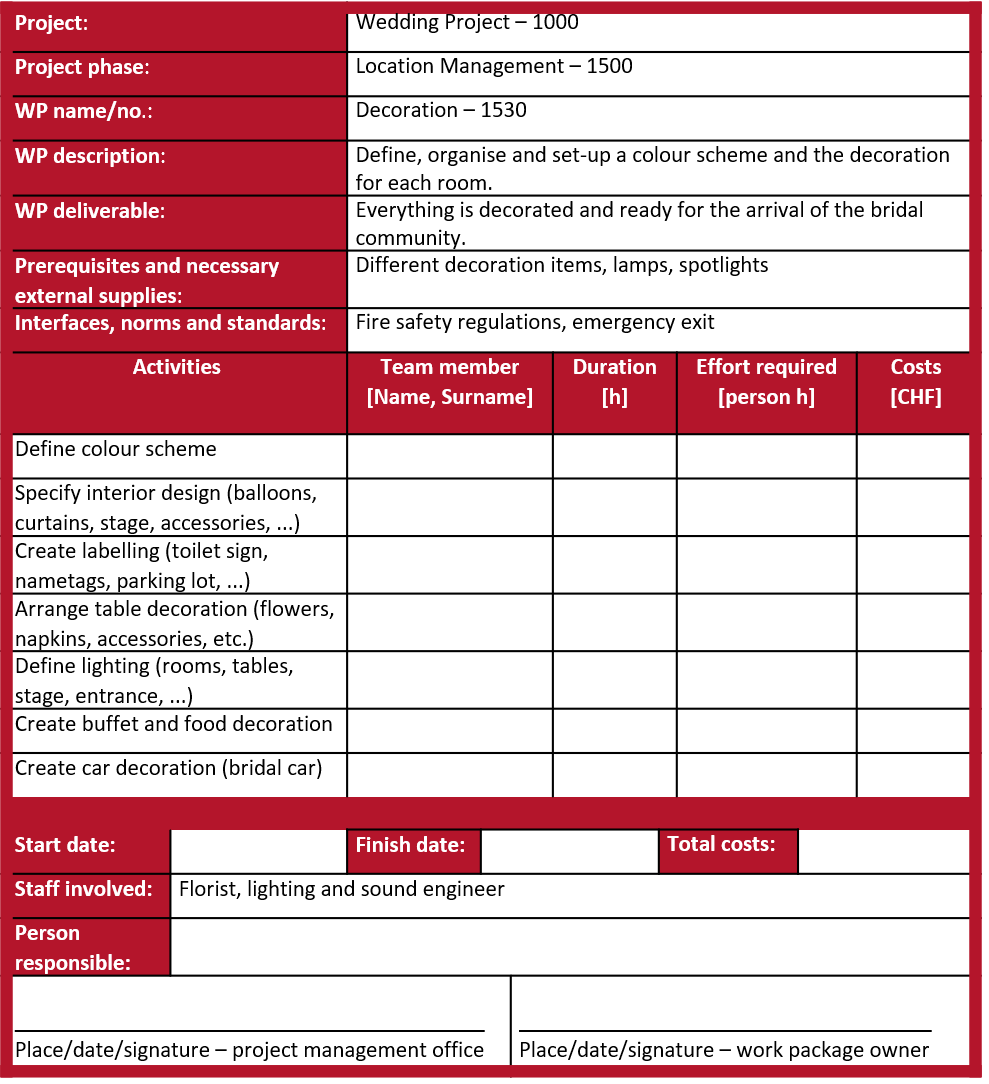Chapter 11 - Work Package¶
Part 3¶
Summary¶
To summarise the keywords of that chapter, here is a quick overview:
| Technical term | Definition |
|---|---|
| Work package (WP) | Smallest unit in a WBS which describes the activities to accomlish a certain task Ideally defined as a closed-end performance element, deviating from another and linked to other WPs in a clear and straightforward way |
| Sub-task (ST) | A project task that is sub-divided into smaller units in the work breakdown structure Group of related WPs in the WBS Sub-tasks can be defined at several levels, whereby each higher-level sub-task comprises a group of related sub-tasks at the next lower level |
| Project network diagram | A visual representation of the workflow of a project Shows how all WPs and other activities are linked together For further reading take a look at "Chapter 12 - Process and Time Schedule" |
| Work package owner (WPO) | Responsible for the WP Reports to project management on progress In charge for preparing a detailed work package description (e.g. activities that must be performed for realisation) |
| Work package description | A detailed document with all relevant information about the work package (e.g. person responsible, WP content, dates, breakdown of activities/tasks) |
| Coding | Classification system for the elements in the WBS In accordance with the requirements of the organisation's accounting department Often numerically coded |
Let's practice - transfer project¶
Now it's your turn.
Use the WBS from the previous chapter to create work package descriptions
- for the sub-task "Cleaning of - 1820" containing the WPs "Rooms - 1821", "Equipment -1822" and "Dishes - 1823"
- and the WP "Plan decoration - 1530".
Solution: Cleaning of - 1820



Solution: Plan decoration - 1530

Test yourself!¶
Now it is time to check your knowledge.
Answer the following questions for yourself. Please take your time and think carefully about what you would answer before revealing the solution.
What rules for creating work packages for the work breakdown structure have proven to be useful?
- A work package should, if possible, be defined as a closed-end performance element that is differentiated from and linked to other work packages in a clear and straightforward way.
- Only one person should be accorded responsibility for each work package - irrespective of how many people will be working on it.
- When the WBS is phase-oriented, it should be possible to assign each work package to one specific phase. Exceptions are multi-phase tasks, such as the on-going monitoring of costs.
- Tasks that are outsourced should be designated as independent work packages.
- A clear specification should be formulated for each element of the WBS so that third parties can easily see whether the work package has already been carried out.
What minimum content should the work package description include?
- Name, number, version and status (planned, tested, released) of the work package
- Brief description of content
- Projected results to be achieved
- Individual activities involved in the work package
- Prerequisites for performance (e.g. external supplies required)
- Projected commencement and completion dates or projected duration
- Projected costs (generally unit costs, e.g. person days)
- Work package manager
- Further information (e.g. regulations that have to be observed)